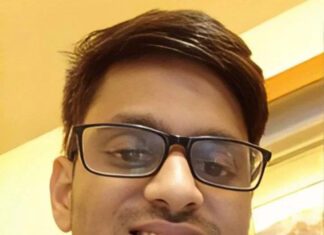Anish Chapagain is the author of Hands-On Web Scraping with Python; we got the chance to sit down and find out more about his experience of writing with Packt.
Q: What is the name of your book?
Anish: Hands-On Web Scraping with Python
Q: What are your specialist tech areas?
Anish: Data Science using Python
Q: How did you become an author for Packt? Tell us about your journey. What was your motivation for writing this book?
Anish: Got an opportunity through LinkedIn.
Q: What kind of research did you do, and how long did you spend researching before beginning the book?
Anish: Exploring and using the latest concepts and tools available.
Q: Did you face any challenges during the writing process? How did you overcome them?
Anish: None
Q: What’s your take on the technologies discussed in the book? Where do you see these technologies heading in the future?
Anish: Data is a fuel, information technology and systems will benefit and explore more with quality and real data. I see the future as very bright, as machines and engines are being trained well. Quality of data should not be compromised, random machine-generated data or filling up alike things should be discouraged.
Q: Why should readers choose this book over others already on the market? How would you differentiate your book from its competition?
Anish: I’ve tried to address the concepts and technologies in the book, suitable for basic to advanced learners. The chapters provided are detailed with their content, with examples and descriptions. Readers and programmers can choose any chapters, and proceed along easy-to-understand and readable practical codes.
Q: What are the key takeaways you want readers to come away with from the book?
Anish: Why Scraping using Python? Techniques required to scrape a page, verify the quality of data using EDA, and apply in practical scenarios like prediction using machine learning.
Q. What advice would you give to readers jumping into this technology? Do you have any top tips?
Anish: We are surrounded by data everywhere, in all devices that we are using. If we want more detailed information and visualize/analyze the results for better understanding, it’s the technology we should dive into and explore. Data-related security is also there we can’t trust any information straightforwardly, here too exploring, collecting, analyzing, and generating information comes into play.
Q. Do you have a blog that readers can follow?
Anish: Not yet
Q: Can you share any blogs, websites, and forums to help readers gain a holistic view of the tech they are learning? What are the key takeaways you want readers to come away with from the book?
Anish: Kaggle, Python weekly (https://www.pythonweekly.com/)
Q. How would you describe your author’s journey with Packt? Would you recommend Packt to aspiring authors?
Anish: It has been an aspiring moment with Packt. It has provided me the platform to share my knowledge and also learn with its materials. I highly recommend Packt for aspiring authors, as they can gain and share.
Q. Do you belong to any tech community groups?
Anish: No
Q. What are your favorite tech journals? How do you keep yourself up to date on tech?
Anish: I do visit the latest blogs and updates from Google, Python, and MIT. Generally do look up https://www.technologyreview.com/
Q. How did you organize, plan, and prioritize your work and write the book?
Anish: Thanks to the Packt team, the book outline was ready first. With chapter related plan on hand, it was never a rush situation and I was finding myself quite early to submission dates. Being the topic of my interest, I was moving along work and writing parallel.
Q. What is that one writing tip that you found most crucial and would like to share with aspiring authors?
Anish: Detail (basic to advanced level) understanding of the topic is crucial, and does help while writing.
Q. Would you like to share your social handles? If so, please share.
Anish: LinkedIn
You can find Anish’s book on Amazon by following this link: Please click here









